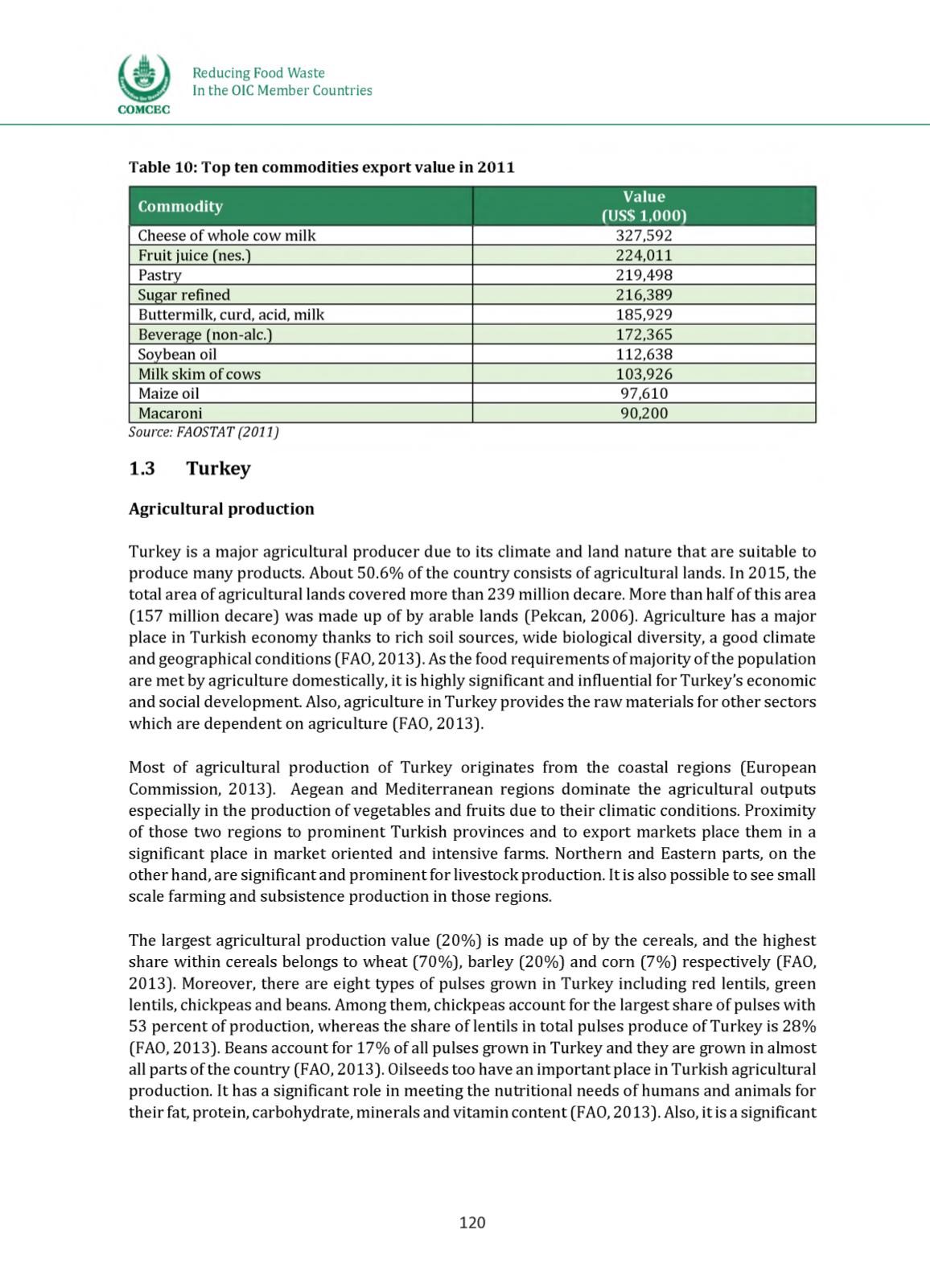

Reducing Food Waste
In the OIC Member Countries
COMCEC
Table 10: Top ten commodities export value in 2011
Value
Commodity
(US$ 1,000)
Cheese of whole cow milk
327,592
Fruit juice (nes.)
224,011
Pastry
219,498
Sugar refined
216,389
Buttermilk, curd, acid, milk
185,929
Beverage (non-alc.)
172,365
Soybean oil
112,638
Milk skim of cows
103,926
Maize oil
97,610
Macaroni
90,200
Source: FAOSTAT (2011)
1.3
T u rk e y
Agricultural production
Turkey is a major agricultural producer due to its climate and land nature that are suitable to
produce many products. About 50.6% of the country consists of agricultural lands. In 2015, the
total area of agricultural lands covered more than 239 million decare. More than half of this area
(157 million decare) was made up of by arable lands (Pekcan, 2006). Agriculture has a major
place in Turkish economy thanks to rich soil sources, wide biological diversity, a good climate
and geographical conditions (FAO, 2013). As the food requirements ofmajority of the population
are met by agriculture domestically, it is highly significant and influential for Turkey’s economic
and social development. Also, agriculture in Turkey provides the raw materials for other sectors
which are dependent on agriculture (FAO, 2013).
Most of agricultural production of Turkey originates from the coastal regions (European
Commission, 2013). Aegean and Mediterranean regions dominate the agricultural outputs
especially in the production of vegetables and fruits due to their climatic conditions. Proximity
of those two regions to prominent Turkish provinces and to export markets place them in a
significant place in market oriented and intensive farms. Northern and Eastern parts, on the
other hand, are significant and prominent for livestock production. It is also possible to see small
scale farming and subsistence production in those regions.
The largest agricultural production value (20%) is made up of by the cereals, and the highest
share within cereals belongs to wheat (70%), barley (20%) and corn (7%) respectively (FAO,
2013). Moreover, there are eight types of pulses grown in Turkey including red lentils, green
lentils, chickpeas and beans. Among them, chickpeas account for the largest share of pulses with
53 percent of production, whereas the share of lentils in total pulses produce of Turkey is 28%
(FAO, 2013). Beans account for 17% of all pulses grown in Turkey and they are grown in almost
all parts of the country (FAO, 2013). Oilseeds too have an important place in Turkish agricultural
production. It has a significant role in meeting the nutritional needs of humans and animals for
their fat, protein, carbohydrate, minerals and vitamin content (FAO, 2013). Also, it is a significant
120
















